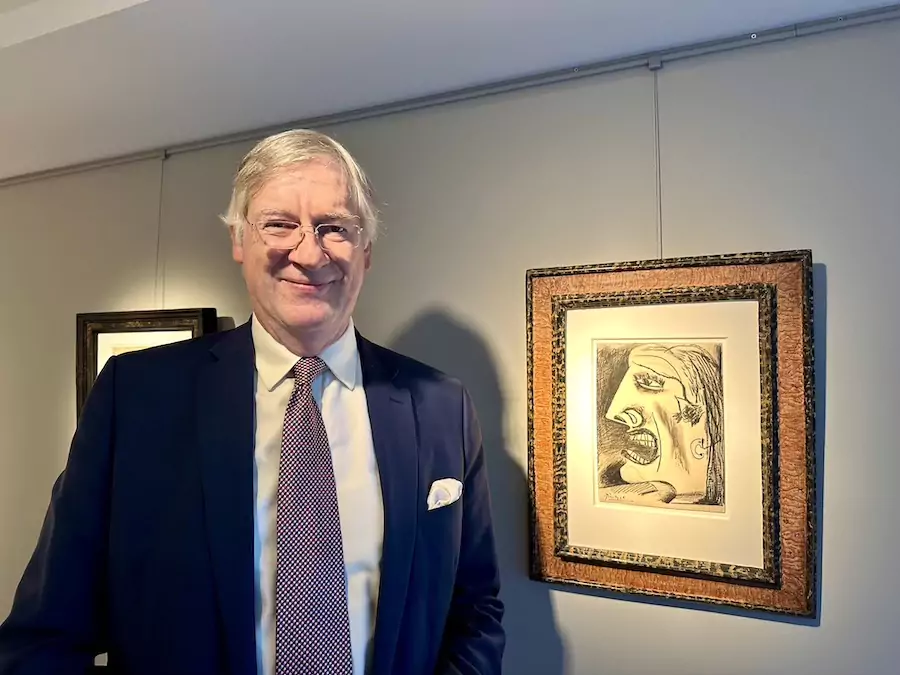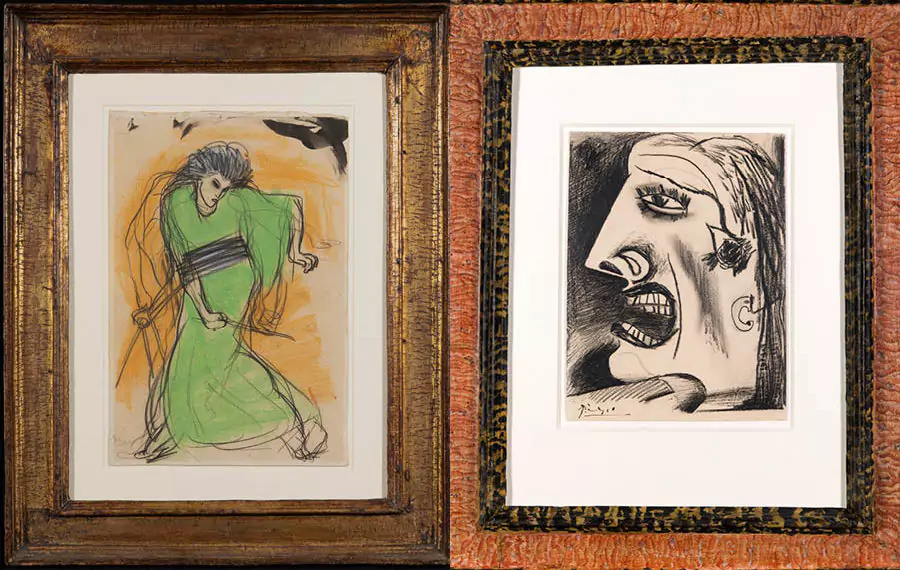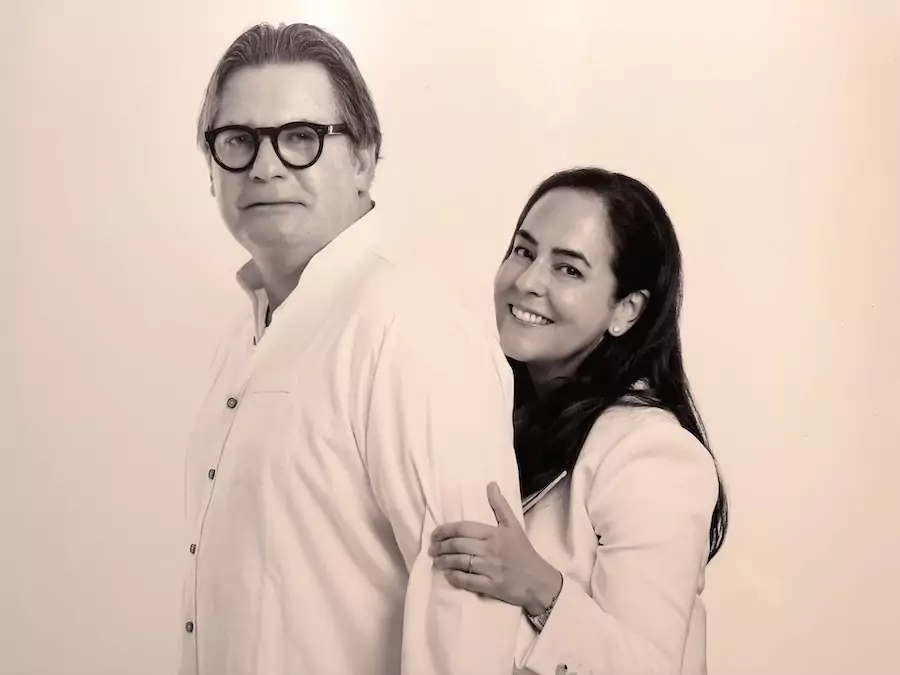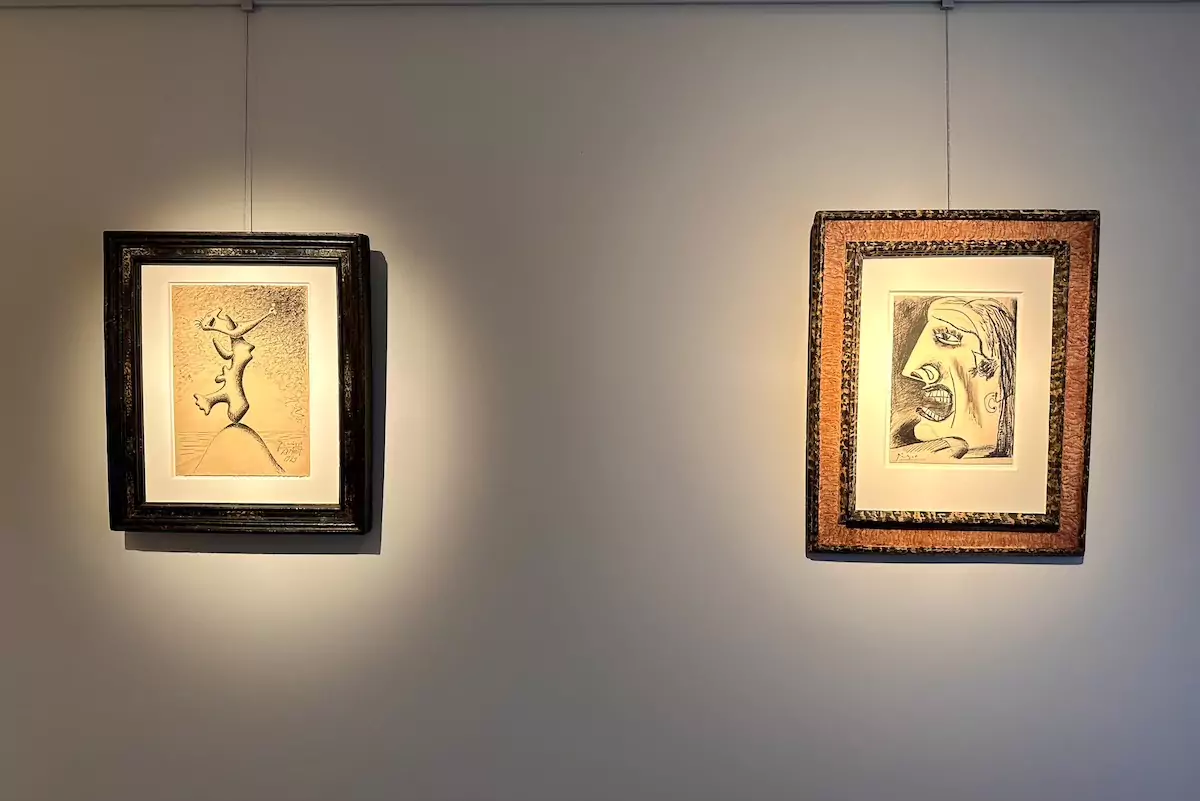Monaco’s Ward Moretti gallery is currently showing the Pieter and Olga Dreesmann Collection of works by Pablo Picasso, an acquisition that spans more than two decades and explores Picasso’s different artistic styles.
Dutch collector Pieter Dreesmann began his Picasso collection in 1998, maintaining a long-held family passion for art that began with his great-grandfather and continued through the line to his father Anton, who collected Old Master paintings and furniture.
Pieter was at the Galerie Cazeau-Beraudi in Paris when he spotted a little Blue period drawing by Picasso and immediately became infatuated. During this acquisition, he asked the gallery to give him the five most important books about the artist and began what would become an in-depth study of Picasso and his work.
It was at this point that London dealer James Roundell, who famously auctioned van Gogh’s ‘Sunflowers’ for a record $39.9 million in 1987, came on board to advise Pieter in his acquisitions. The North Londoner spent the next 25 years helping Pieter and his wife Olga build a collection of 32 Picassos – a survey of the artist’s drawing style from his Blue period starting in 1899 to the year 1960, the last dated work in the Dreesmann collection.

“We tried to find work that shows Picasso in his different styles – and he almost had a different style and different subject matter for every day,” explained Roundell during a private tour of the collection at Monaco’s Ward Moretti gallery. “It was quite an intellectual exercise, and also very unusual to work with a client with a specific target and plan over 25 years. Today’s enthusiasts buy works, they’re not really collectors. Peter and Olga are real collectors; they love looking for works, researching them, acquiring them, thinking about them and presenting them.”
Significantly, it is a collection that was built to be lived with. The works were displayed on one entire wall of the Dreesmann family home, framed in detailed 16th and 17th century Italian and Spanish frames. The idea was to create a collection rather than to acquire separate, unrelated works. No matter what they selected, the prime importance was both the quality of the objects and how any new acquisition might relate to works already in the collection.

“Pieter didn’t have 10 million to throw at a piece,” said Roundell. “Indeed you could spend 30 million on an old painting by Picasso. Yet you can buy this whole collection for that. So, you really get value in the drawings that perhaps you don’t find in the paintings.”
Moreso, this preference for drawings is based on the collector’s belief that works on paper are more immediate, more delicate than paintings; they are an intimate reveal of an artist’s passion and emotion.
For example, Picasso’s portrait of Carles Casagemas (1899-1900) is one of the most significant in the Dreesmann Collection. This crayon and watercolour sketch was reproduced in an obituary of Casagemas after he committed suicide the year after it was first created. The death of Picasso’s dear friend, the young poet, is said to have instigated Picasso’s Blue period, which features works with the subjects of life and death.

Another highlight in this collection is La Danseuse Sada Yacco, a striking pastel, crayon and black ink on paper piece from 1900 or 1901, which depicts Japanese actress Sadayakko Kawakami, known as Sada Yacco. Trained as a geisha and married to a popular actor and director, Otojirō Kawakami, she first performed in European theatres at the turn of the century. This, said Roundell, is perhaps the beginnings of a theatre poster, but it was never realised as a completed project.
There are works that celebrate the Côte d’Azur, like Sur la terrasse (30 August 1933), in which Picasso transformed his lover Marie-Thérése’s head into a sculpture and set it on a plinth on a pavement surrounded by trees and the typical red-tiled roofs of Provençal buildings. There is also the pastel Trois baigneuses, Juan-les-Pins (1920), which depicts bathers at the beach, an ode to the Mediterranean and the place where Picasso and his first wife Olga would spend their summer holidays.
Adding depth to this collection are sculptures and ceramics.

Each artwork and its provenance – predominantly Picasso’s family members and lovers’ estates – has been explained in detail in an extensive catalogue created with Picasso specialist Marilyn McCully.
Money from the sale will go towards acquiring the Dreesmanns’ next collection, the Dr. Anton C. R. Dreesmann Fellowship at the Rijksmuseum in Amsterdam and to various philanthropic causes linked to the care of children with genetic disorders and special needs.
Monaco is the last in a year-long showing of the Dreesmanns’ Picasso collection that began at Ward Moretti London and featured in their galleries in Paris and New York. It will be on display until the end of this month.
“Having witnessed how Pieter and Olga have nurtured this high calibre, scholarly collection with James Roundell’s insight and advice over the last 25 years, it is a privilege to now be entrusted with the sale of these rare and important Picassos to new, discerning collectors and institutions,” said Emma Ward.
Click here to see more in our Instagram reel.
Join the Monaco Life community – the largest English media in the Principality.
Sign up for the Monaco Life newsletter, and follow us on Facebook, Instagram, LinkedIn and Tik Tok.
RELATED ARTICLE:
Main image by Monaco Life
